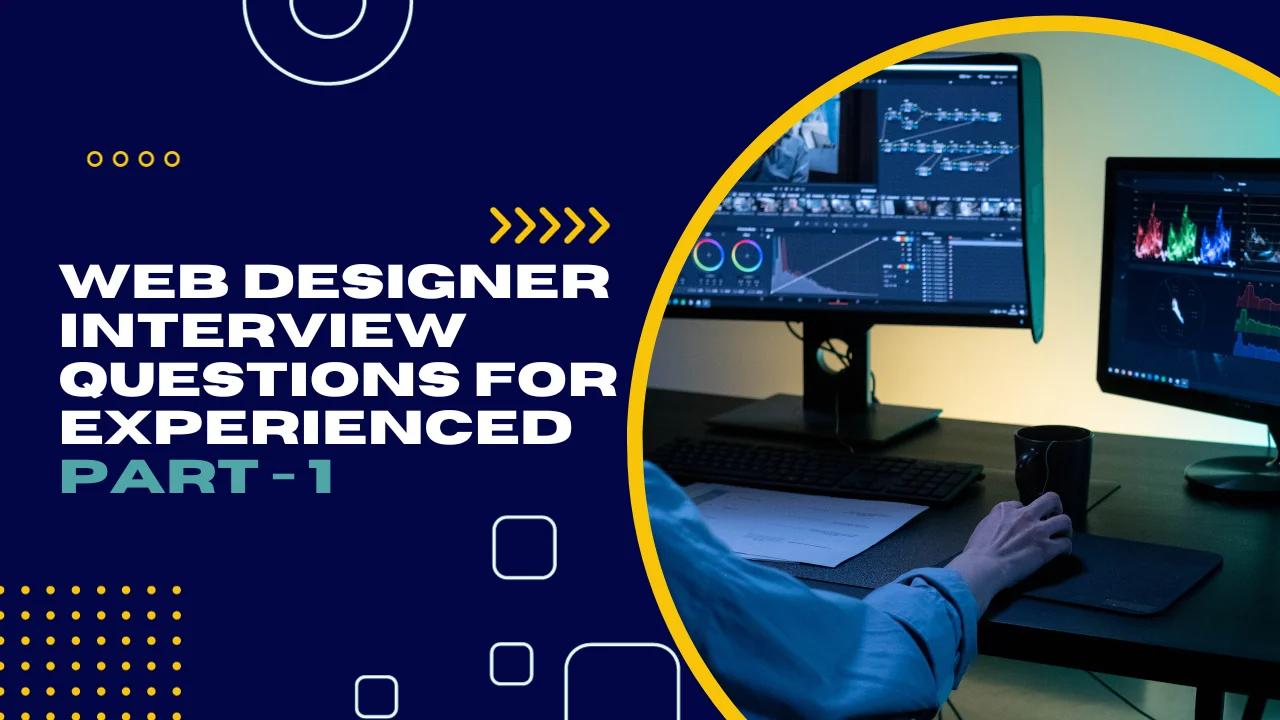Web Designer Interview Questions for Experienced: Part - 1

1. How to write a UX case study?
A UX case study typically follows a structure that includes the problem, research, design process, and outcomes. Begin by outlining the project’s background, the user pain points, and the goals. Then, detail the research methods, such as user interviews or usability testing, followed by the design iterations and solutions implemented. Conclude with the results and the impact on users, providing insights and lessons learned.
2. State the difference between HTML elements and HTML tags
HTML elements are the building blocks of a web page, defined by a start tag, content, and an end tag. Tags mark the beginning and end of elements. For example, <p> is the tag that starts a paragraph element, while the actual content between <p> and </p> forms the paragraph element itself.
3. What do you mean by jQuery?
jQuery is a popular JavaScript library designed to simplify front-end development tasks like DOM manipulation, event handling, and animation. It abstracts complex JavaScript functionalities into simpler methods, making it easier and more efficient to write JavaScript code.
4. What are the different jQuery functions available for designing web pages?
jQuery offers numerous functions for various purposes. Some common ones include DOM manipulation (like addClass(), removeClass()), event handling (click(), hover()), effects (fadeIn(), slideUp()), AJAX ($.ajax()), and more, all aimed at facilitating web page design and interactivity.
5. Explain the differences between "visibility:hidden" and "display:none" in web development.
visibility:hidden hides an element but preserves its space in the layout, whereas display:none hides the element and removes it from the layout entirely. Elements with visibility:hidden remain in the document flow but are not visible, while those with display:none are not rendered on the page.
6. Describe the CSS file and its benefits.
A CSS file contains style rules that define the appearance and layout of HTML elements. It separates the content from its presentation, making the code more organized, maintainable, and allowing consistent styling across multiple web pages.
7. How are CSS files integrated into your webpage?
CSS files can be linked to an HTML document using the <link> tag within the <head> section. For example: <link rel=”stylesheet” href=”styles.css”>. This references the external CSS file named “styles.css” to style the HTML content.
8. What's the advantage of saving text-heavy graphics in GIF format rather than JPG?
GIFs support transparency and animation, making them suitable for images with text or simple graphics. JPGs, on the other hand, are better for photographs but may lose quality with text or graphics due to compression.
9. In what situations would you advise using JPEG and when would you recommend PNG?
JPEGs are ideal for photographs or images with complex colors where some loss of quality is acceptable, while PNGs are better for images with transparency, sharp lines, or text where maintaining high quality is essential.
10. Explain the Dreamweaver template.
A Dreamweaver template is a pre-designed layout or structure for web pages that allows consistent design elements across multiple pages. It includes editable regions where content can be added or modified without altering the overall template design.
In conclusion,
Part 1 concludes with a comprehensive array of advanced web designer interview questions, providing seasoned professionals with invaluable insights and preparation for challenging roles
Ready to take your Web Designing skills to the next level? Explore our top-notch Web Designing Training in Chennai. Our expert instructors and hands-on approach ensure that you not only ace interviews but also thrive in real-world scenarios. To kickstart your journey to Web Designing excellence, contact us at +91 9655-333-334. Secure your future today with the best Web Development Course in Chennai. Don’t miss out on the chance to propel your career forward!





